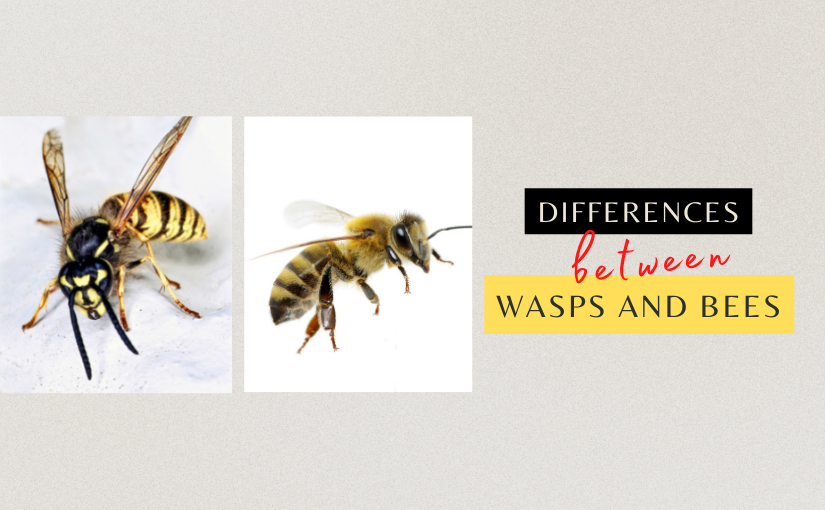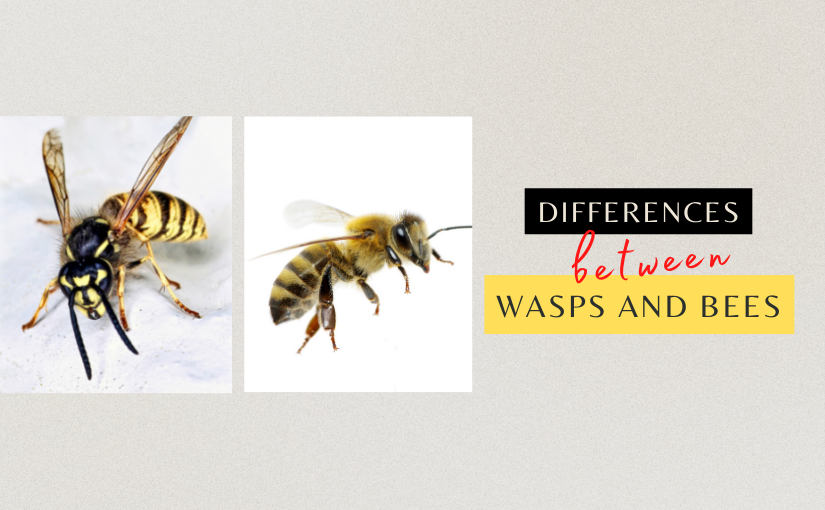
If you have difficulty telling the difference between bees and wasps, you’re in good company. Even entomologists, who are scientists who specifically study insects, sometimes struggle. Nevertheless, knowing what type of insect you are dealing with is important for pest control in Toronto. Different techniques are used to remove different types of insects. Also, many species of bees are endangered, while wasps are not, so it is preferable to avoid removing bees whenever possible. Here are answers to questions you may ask when trying to tell the difference between wasps and bees.
What Are the Differences in Appearance?
At first glance, wasps and bees may look very similar. However, if you study them more carefully while keeping a safe distance, you may notice some important differences:
- Body Shape: Bees tend to be rounder and more full-bodied. Wasps are usually slimmer, with a discernible “waist” between the thorax and abdomen that gives them more of an hourglass shape.
- Colour: Both bees and wasps often have black stripes alternating with bands of a lighter colour. With wasps, the lighter colour is more likely to be a bright yellow. A honeybee’s stripes are usually closer to orange or brown.
- Hair: Bees have at least some fuzzy-looking hairs on their bodies. This helps them to collect pollen as they visit flowers. Bumblebees are fuzzy all over their bodies. A honeybee is mostly bare on its abdomen but has hair around its thorax and head. Wasps have little if any, hair. Their bodies appear smooth and shiny.
How Can You Tell the Difference Between a Bee Nest and a Wasp Nest?
Bees and wasps make nests out of different materials. Wasps chew up wood with which to build their nests. They mix the wood particles with their saliva and spread it to form a paper-like substance. Bees make their nests out of wax, a substance that is converted from the sugar that they eat and secreted to use as a building material.
A colony of bees remains in the same nest from year to year, hibernating during the winter. By contrast, wasps abandon their nests at the end of the season and build new ones every year. However, if you are dealing with a nest on your property, you probably do not want to wait a year to see if the insects abandon it.
Do Both Wasps and Bees Sting?
Both wasps and bees can sting in defence of themselves or their colony. Wasps have smooth stingers that they can insert into the skin and then retract, meaning that they can sting more than once. Honeybees have barbed stingers that get stuck in the skin. When a honeybee tries to fly away after stinging, the stinger gets pulled out of its body, and the bee dies shortly thereafter. However, this is not true of all bee species. Bumblebees have smooth stingers like wasps and can survive to sting multiple times.
The best way to avoid getting stung by either a bee or a wasp is to avoid their nests. Both types of insects can build nests underground that can be hard to see, but if you see two-way traffic coming in and out of the same hole, you may have stumbled upon an active nest. Don’t swat at a bee or wasp if it lands on you. A lone insect probably won’t sting you unless provoked, so stay still until it flies away.
If you have to go near a honeybee nest, wear light-coloured clothing. Dark colours make you look like a bear, which may make bees feel threatened. Honeybees will give you a warning when you get too near their nest. They’ll fly into your head and then bounce off. Heed this warning and back away because the next step is stinging.
Part of Truly Nolen’s wasp removal process is positively identifying the species. Contact us for an in-depth inspection of your property.
